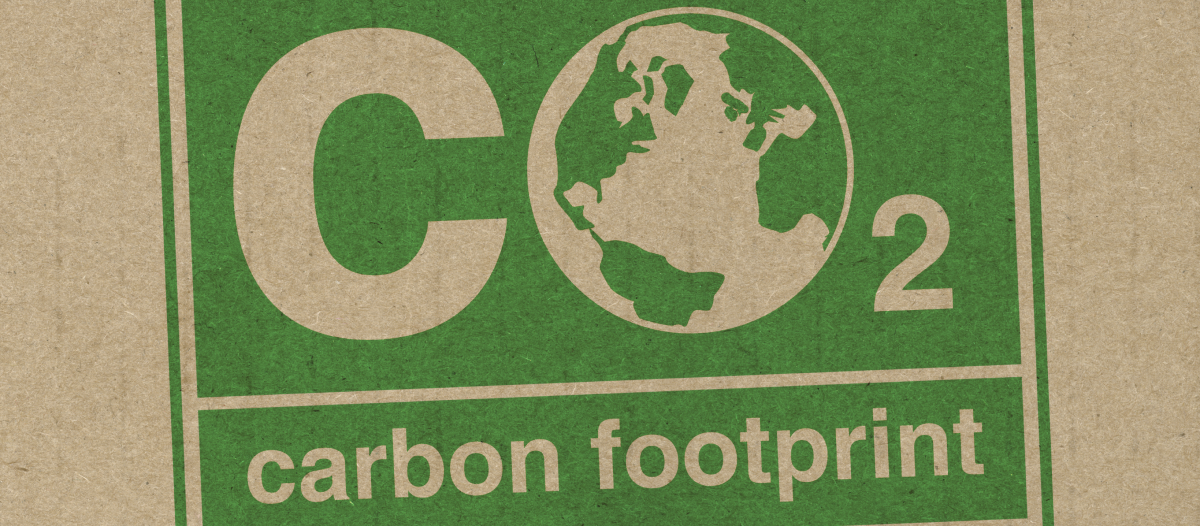Urban Energy Transformation
Harnessing renewable energy for sustainable cities

Urban areas drive the global energy transition. As the UN Environment Program notes, “cities consume over two-thirds of the world’s energy” and generate roughly 70 percent of greenhouse gas emissions. This outsized urban footprint means that decarbonizing cities is imperative. Achieving this requires shifting from legacy, centralized fossil-fuel systems to hybrid models with high shares of distributed renewable generation, energy-efficient buildings and smart grids.
Well-planned, compact cities can dramatically cut energy use, especially with strong public transit and strict building codes while upgrading infrastructure to cope with growing heat, flooding, and other climate risks. In short, cities must accelerate integrated energy transformations to meet climate goals and sustain economic growth.
Urban footprint & emissions: Key statistics & challenges
-
Energy demand
The demand for electricity, heating and transport is concentrated on global urban populations. According to the World Bank, cities account for more than 70 percent of CO2 emissions, largely due to building and transport energy use. High-density development traps heat (the urban heat island effect) and drives large cooling loads, placing stress on grids and water resources.
-
Climate impact
Rapid urban growth exacerbates climate change as concrete and asphalt absorb heat, increasing ambient temperatures. IEA data show that space cooling energy use has more than tripled since 1990 and strains local water supplies for cooling towers and irrigation.
-
Air pollution & health
Fossil-fueled power and traffic in cities produce NOx, SOx and fine particles. In the U.S., such pollutants have been linked to approximately 300,000 premature deaths annually. Transitioning to clean power can sharply reduce these losses. For example, U.S. Department of Energy analysis finds renewable energy improves air and water quality and could avert up to US$77 billion per year in health damages by displacing pollution. Cleaner energy in cities thus also means healthier citizens.
Renewable revolution: Strategic importance of clean energy
-
Global momentum
Governments are committing to dramatic renewable build-out. At COP28 133 countries agreed to triple global renewable capacity by 2030. This pledge underscores the strategic priority of clean energy: renewables expand energy access while slashing carbon.
-
Falling costs
Rapid cost declines make wind and solar a less expensive option in many places. For instance, utility-scale solar photovoltaic (PV)panels are now the lowest-cost source of new power in most markets, enabling its unprecedented deployment. The IEA reports solar PV capacity tripled from 2018–23, and through 2030 solar is expected to supply approximately 80 percent of new renewable growth.
-
Grid penetration
As renewables surge, grids are adapting. By 2030, wind and solar energy will dominate power generation growth. Many cities and utilities plan to integrate large amounts of solar, wind and storage, seeing them as cost-effective, risk-reducing alternatives to imported fuels. This “renewables revolution” provides a practical, scalable pathway for cities to meet their climate and energy goals.
Urban energy systems – Solar, wind, geothermal & microgrids
-
Solar PV
Rooftop and façade solar turn buildings into mini-power plants. Distributed PV is booming policy support and high retail electricity prices are driving rapid growth. In practice, this can significantly offset city power needs. For example, large-scale solar farm projects (utility PV) and millions of rooftop panels (residential/commercial PV) are planned worldwide. IEA data shows solar PV generation jumped approximately 25 percent in 2023, and solar energy is on track to become the single largest renewable by 2030.
-
Wind energy
Urban wind is limited by space, but nearby onshore and offshore wind farms supply clean power to many metropolitan regions. Globally, wind energy is set to be the second-largest renewable source by 2030. Cities are also innovating with smaller-scale wind (vertical turbines, building-integrated wind) where feasible. Growth in wind power not only diversifies the supply mix but also enables load flexibility as wind output often peaks at different times than solar.
-
Geothermal & heat pumps
Ground-source and district geothermal heating/cooling offer high-efficiency temperature control. Geothermal heat pumps use stable subsurface temperatures for space heating, cooling and hot water, slashing building energy use. Such systems provide renewable, efficient temperature control for entire buildings and communities, reducing costs and boosting resilience. In practice, cities can install shared geothermal loops for neighborhoods or commercial districts, achieving large energy and greenhouse gains.
-
Microgrids & storage
Distributed energy resource systems (combining renewables, batteries and smart controls) create local microgrids. These microgrids can separate from the main grid during outages, greatly enhancing resilience, critical for hospitals, data centers and emergency services. Microgrids also smooth renewables’ variability by balancing local supply and demand. While specific technologies vary, the principle is to treat the city as a network of interconnected nodes – each with its own generation, storage and digital control to optimize performance.
Environmental impacts: Emissions, water, HVAC & public health
-
Reduced emissions
Renewables eliminate tailpipe and smokestack pollution. Studies show replacing fossil generation with renewables cuts SO2, NO2 and particulate emissions almost completely, leading to cleaner urban air. This yields immediate health benefits including fewer respiratory illnesses and deaths, and lower greenhouse gas (GHG) levels in the atmosphere.
-
Cooling & water use
By relying more on renewables, cities can reduce freshwater use. For example, solar PV and wind require less water compared to thermal plants. In addition, efficient cooling strategies like “cool roofs” or green shading cut energy demand and water consumption for air conditioning. Optimizing building envelopes and HVAC systems could lower urban water use significantly, though estimates vary by climate.
-
Space cooling/emissions
Rising temperatures and higher AC use drives more electricity use and emissions. If poorly managed, this also increases health risks from heat stress. In response, energy-efficient cooling technologies such as high-SEER air conditioners, passive design and smart thermostats are crucial to reduce carbon emissions.
-
Public health co-benefits
By cutting pollution, cities reduce pollution-related illnesses, including heart and lung disease, allergies and cancer risks. Well-sealed homes with efficient HVAC keep indoor air healthy and maintain safe temperatures during heatwaves, protecting vulnerable populations. Overall, clean urban energy is not just an environmental goal but a public health necessity.
Economic & social value – OPEX, equity, jobs & flexibility
-
Lower operating costs
Once installed, a solar farm or wind turbine supplies electricity at predictable cost, freeing cities from volatile fossil-fuel prices. This can reduce long-term O&M costs for public utilities and buildings.
-
Job creation
IRENA/ILO data show global renewable jobs jumped 18 percent to 16.2 million in 2023, driven largely by solar PV expansion. This growth spans manufacturing, installation and operation of clean energy systems. Notably, in regions leading the transition, renewable sectors are among the fastest-growing employers. Thus, urban renewable projects create local green-collar jobs in construction, engineering and services, advancing economic equity.
-
Energy access & equity
Community solar, rooftop PV cooperatives and microgrids allow low-income areas to tap local clean power rather than relying on distant plants. Many cities are tying renewables to equity programs -- subsidies for solar on affordable housing and inclusive community energy projects -- to ensure all residents benefit. Clean energy also averts costs from health burdens on vulnerable groups and reduces the risk of energy shortages.
-
Resilience & flexibility
Batteries and demand-response systems allow utilities to balance variable wind/solar output. Smart controls can shift loads or separate microgrids during outages. These features reduce costs from peak power purchases and harden the grid against failures.
Innovation examples – Green walls & solar-powered pods
-
Green (living) walls
Vertical gardens on building façades are increasingly popular urban innovations. These vegetated walls shade surfaces and insulate structures. Research shows a green wall can lower wall surface temperatures by up to approximately 10 C and cut building cooling energy needs by roughly 20–25 percent. They also absorb and filter air pollutants, improving urban air quality and providing habitats for wildlife. Cities from Singapore to London have installed living walls on public buildings, reaping aesthetic and climate benefits while making structures more energy-efficient.
-
Solar work pods & furniture
Emerging architectural trends include solar-powered outdoor workspaces and street furniture. These are self-contained “micro-offices” or benches fitted with photovoltaic panels and batteries to power lights, charging ports and climate control. Such pods enable people to work or rest outdoors while connected to clean energy. Examples like Duffy London’s solar office pods demonstrate how this novel innovation in urban design can harness sun and wind to create resilient, low-carbon communal spaces.
-
Other design innovations
Municipalities are also launching modular greenhouses, solar canopies over plazas and cool-roof technologies. All reflect a broader ethos to embed renewable generation and nature-based solutions into everyday infrastructure. These innovations not only reduce carbon but also serve as symbols of the city’s sustainability commitment, engaging the public and stakeholders.
Smart city integration: AI, IoT & digital twins
-
AI for energy management:
AI algorithms can optimize grid operations, predict demand peaks and automate building controls for maximum efficiency. The IEA emphasizes that “there is no AI without energy.” In other words, digital transformation and energy decarbonization are tightly linked. For example, smart thermostats and adaptive lighting systems use machine learning to cut energy waste in real time, while demand-response platforms allow utilities to smooth load fluctuations using consumer devices.
-
Internet of Things (IoT)
Smart sensors and meters spread throughout city systems collect vast data on consumption patterns. These IoT devices enable sophisticated demand-side management. For instance, networked sensors on streetlights, HVAC units and appliances can be coordinated to reduce loads during grid stress. More buildings are integrating IoT-driven energy management systems, giving facility managers fine-tuned control and visibility.
-
Digital twins & analytics
Some cities are developing digital twins – virtual replicas of infrastructure – to plan and optimize energy flows. By simulating building performance, traffic and weather, digital twins allow planners to assess policies like retrofitting buildings or deploying EV chargers and see impacts before implementation. Such AI-supported modeling helps cities make data-driven decisions on investments in renewables, efficiency upgrades or grid upgrades.
-
Citizen engagement apps
Platforms and apps that show live energy use or offer green building ratings motivate conservation. Gamified energy-saving programs or local clean energy tracking build community participation. In this way, digital tools link people to infrastructure – an essential feedback loop for sustained impact.
Policy & regulation: Codes, incentives & Vision 2030
-
Building codes & standards
Strong regulatory frameworks are critical. Many countries now require strict energy performance in urban construction. For example, China’s 2022 building code mandates new, expanded or renovated buildings be designed for high energy efficiency. Japan’s 2022 regulations require zero-energy performance in all new buildings by 2030 and for existing stock by 2050. The EU’s 2023 revised Energy Performance of Buildings Directive similarly mandates zero emissions in all new public buildings by 2026 and all new buildings by 2028. In the U.S., the latest ASHRAE standard calls for zero-net-energy operation in new buildings. These codes ensure new urban developments are renewable-ready from the ground up.
-
Financial incentives
Cities and nations offer financial tools to accelerate clean energy adoption. Examples include tax credits or rebates for solar and storage installation, low-interest green loans, feed-in tariffs for rooftop PV, and net-metering policies allowing small producers to sell back excess power. Saudi Arabia’s Vision 2030, a comprehensive economic diversification strategy, explicitly targets large-scale renewables. Climate commitments like net-zero targets tie national budgets to urban energy planning, and carbon pricing in some jurisdictions further favor renewables. Policies that position building code with incentives are the levers that convert urban sustainability plans into reality.
-
International frameworks
Institutions like the IEA, UN and World Bank supply guidelines and funding initiatives. More national and local governments are crafting policies aligned with the UN’s Sustainable Development Goals, especially SDG7 for clean energy and SDG11 for sustainable cities. Progressive regulation and incentives create a favorable environment for FMs and developers to invest in renewable upgrades.
Community & culture: Awareness, apps & participation
Public engagement is the social foundation of any energy transformation. Governments can build support and adoption by deploying awareness campaigns, offering energy dashboards and gamification apps and involving communities in planning. Mobile apps that track household electricity or crowdsource energy data (such as thermostats synchronized across a district) raise consciousness and encourage behavioral shifts. When residents can contribute ideas for community energy plans and programs, they build ownership of these solutions. Technical progress must be paired with a culture of sustainability. Empowered and informed residents will demand cleaner energy and help cities achieve climate goals.
Renewables as the foundation of healing cities
Urban areas face intertwined challenges of rising energy demand, pollution and climate risk. By integrating solar, wind, geothermal and efficiency measures into city infrastructure, municipalities can slash emissions, cut operational costs and protect public health. Smart technologies make renewable grids and efficient buildings even more effective, while progressive policies and engaged communities ensure these transformations are resilient and inclusive. Together, these strategies not only help curb climate change, but also remediate urban air, conserve water and improve living standards. In the vision of sustainable urban planning, clean and distributed energy is not an add-on. It is the healing power that will make cities greener, healthier and more equitable for all.

Aykean Forde CFM SFP, FMP, MBA, MA, is the facilities director of The International School Port of Spain in Trinidad & Tobago (Grades Pre-K-12). Forde serves as a member of IFMA's Global Board of Directors, the board liaison for IFMA's Americas Advisory Board, an IFMA Qualified Instructor and a past member of IFMA's Audit Committee. An ambassador of FM, she passionately serves and collaborates with others to positively impact workplace experience while leading organizations towards making their vision a reality. She has also spoken at conferences in Trinidad and Tobago, the Bahamas and the U.S.

Izzat Ali Khan, SFP, FMP, is the general manager at EFSiM Facilities Services. A seasoned FM professional, he is passionate about creating a positive impact in business through sustainability. He focuses on integrating sustainability and innovation in businesses to build the FM industry and make the world a better place to live.
Read more on Sustainability , Occupancy & Human Factors and Real Estate or related topics Energy , Environmental, Social and Governance (ESG) and Occupant Health
Explore All FMJ Topics









